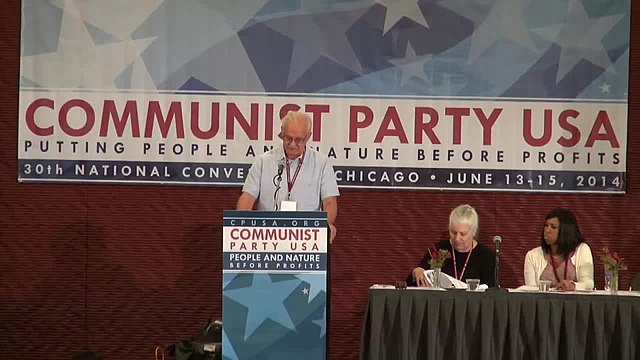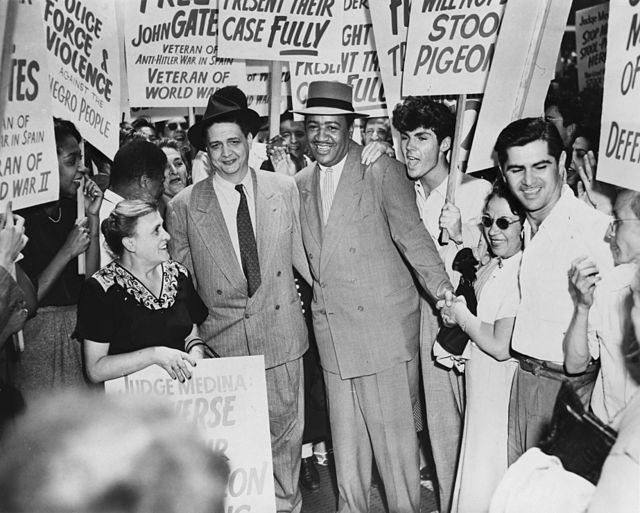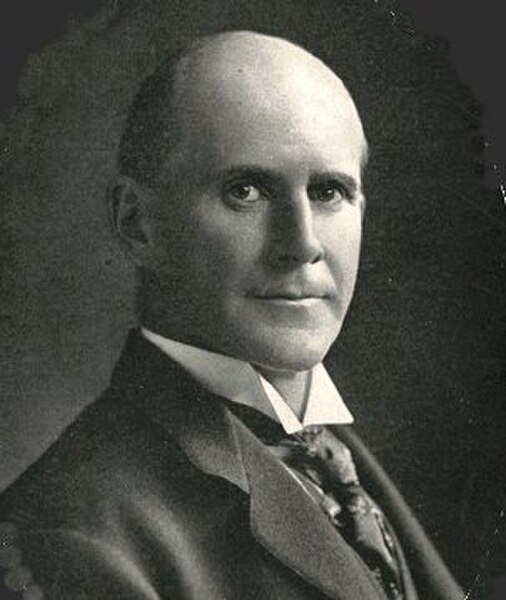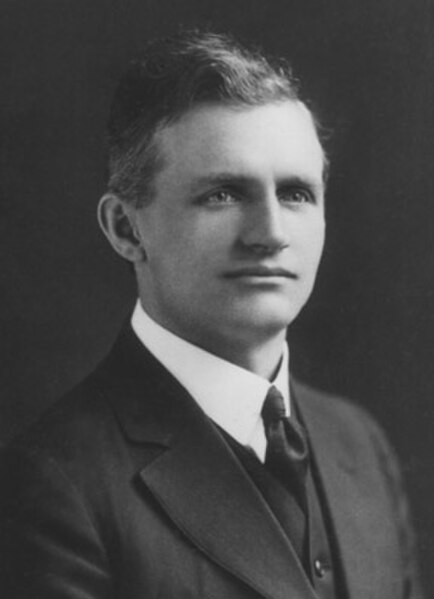The Communist Party USA, officially the Communist Party of the United States of America (CPUSA), also known as the American Communist Party, is a communist party in the United States which was established in 1919 after a split in the Socialist Party of America following the Russian Revolution.
Charter for a local unit of the CPUSA dated October 24, 1919
The Washington Commonwealth Federation newspaper after the signing of the Molotov-Ribbentrop pact (original scan)
The 30th National Convention was held in Chicago in 2014
Robert G. Thompson and Benjamin J. Davis leaving the courthouse during the Smith Act trials of Communist Party leaders in 1949–1958
Socialist Party of America
The Socialist Party of America (SPA) was a socialist political party in the United States formed in 1901 by a merger between the three-year-old Social Democratic Party of America and disaffected elements of the Socialist Labor Party of America who had split from the main organization in 1899.
Election poster for Eugene V. Debs, Socialist Party of America candidate for President, 1904
Debs was the founding member of the Socialist Party of America.
Executive Secretary Adolph Germer was one of top five Socialist of America leaders prosecuted by the Department of Justice in 1919.
Alfred Wagenknecht, top leader of the 1919 Left Wing Section of the Socialist Party








